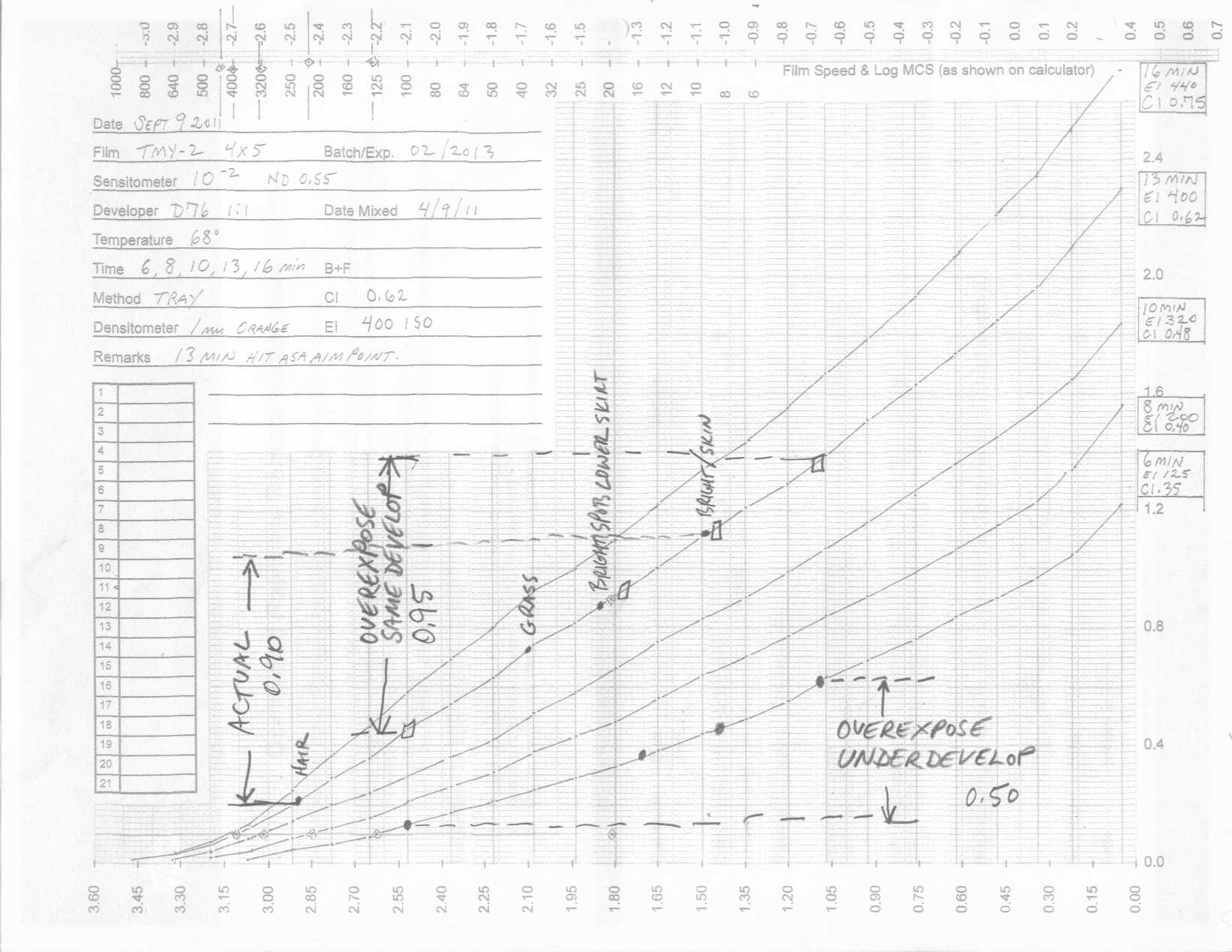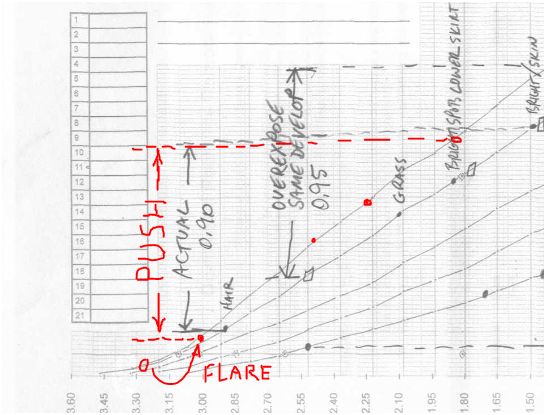Which film and which developer will you be using Ryan?
If this is a combination you've used before, what is you're developing time for ISO 400?
Cheers!
Which film and which developer will you be using Ryan?
If this is a combination you've used before, what is you're developing time for ISO 400?
Cheers!
I use tri-x 320 with HC-110 and TMAX100 & 400 with TMAX RS. I'm not sure what they are doing to HC110 and I hate the 400 speed emulsion of tri-x so I may just switch to TMAX. It just costs a lot more to develop. Tri-X 400 is just the normal times listed for HC110, i might play around with it again but so far just not happy with it.
Ryan Mills
Certainly everyone is different in their preferences with regard to film development and how to shape the film for final printing. To that end, there are many "ways to skin the cat". However, to fully and properly realize all the potential the glorious wet process can produce one must marry their style, negative processing and resulting printing technique into a unique relationship tailored to the photographer's preferences and the materials one chooses. Only those controlling the entire process from beginning to end can reverently speak of how to.... skin the cat!
Reduced Agitation forms of development offer more flexibility and creative potential than any other method of processing film. If your not familiar with the many ways to develop film you really have no cat in the fight. The Reduced Agitation process is however, not for everyone, it is time consuming and tedious at best and certainly does not favor heavy shooters.
It is my belief and I believe based on Sandy's comments his viewpoint as well, the processing of film is much more "process based" than it is about one film reacting with different developers to effect the characteristic shape of the film's curve.
I prefer to develop my negatives to a very low contrast index, usually between .9 and 1.10 density above Film Base + Fog. Even before Multi-Contrast papers came into vogue I would seek high contrast scenes, give generous exposure with a significant reduction in development with the intention of printing on "hard contrast" graded papers. On the surface this seems to go against common sense, hopefully I will explain the principles clearly and the reasoning will make sense. Today, the quality of Multi-contrast papers have effectively brought about the demise of graded papers.
Think of the relationship between film and Multi Contrast paper this way, the extremes of the paper are maximum black and paper base white, these cannot change, they are basically the same no matter what multi contrast paper you use provided you do not have side by side comparisons, (I use and feel that the Ilford Warmtone Multi Contrast paper is the finest currently available today.) Think of the enlarging paper being used as a bellows with the beginning and end of the bellows as D max and Paper Base white. The center section of the bellows equates to the Mid Tones, with a low contrast negative your resulting printing technique requires expanding the Mid Tones (mid section of bellows) where as a higher contrast negative requires compression of the Mid Tones and the High Values. When viewing / evaluating prints it is the Mid Tones and their relationship to one another that we most react with, near or pure black or white are nothing more than reference points. Prints will always look superior when mid tone contrast is expanded rather than compressed in concert with a properly designed negative. I use this approach for any scene contrast I encounter, so in an ultra high contrast scene I will knowing develop that negative to a lower contrast index fully knowing I am going to use the hardest contrast printing combination I can.
When combining the above method with the capabilities of "Split Contrast Printing" in other words using only the # 1 and # 5 filters to affect contrast and density on the final print the Mid Tones of the photograph realize their maximum potential. The debate of "Split Contrast Printing" is a topic for another time, rest assured however, that is the best way to portray the Mid Tones to their full potential, if one concedes that Mid Tone Relationships are what we react with most, than the point is moot.
I visit and see a lot of photographer's work, both contemporary and vintage, if there were superior results out there with regard to Silver Gelatin printing I would be the first one to change the way to... skin a cat!
Cheers
It's counter-intuitive, but pick the time for 400. Another counter-intuitive point that explains why I suggest that. Photographs taken in bright sun don't necessarily have a long range. Maybe 5-6 stops metered difference from black to white in one kind of light. It's photographs taken in bright sun plus areas in shade - where that shade is important - that have long range. So you might have a normal range subject and you might not need to underdevelop shots taken in bright sun, if everything's in the sun.
Bright sun, 400 speed film rated at 250 (1/300 f/16 no filter) developed normally and printed on Grade 2.

Ryan: I don't know how clear it is after all this, but he's basically pulling the film, 1-2 stops.
Ryan,
I don't know if graphs work for you. But I thought I'd draw some points on my TMY-2/D-76 1:1 curve family to illustrate my actual photograph and where the tones fall.
I pulled out the negative and measured it on a densitometer. Her hair has a density 0.20, the grass 0.72, brightest highlight I could measure on the lower skirt 0.88 and brightest part of her arm 1.10. This means essentially my negative has a measured density range of 0.90 - suited for Grade 3 paper. I am sure that there are higher densities in this negative, and actually I printed it on Grade 2 paper. So the Grade a negative is suited for and the Grade you eventually use is not scientifically determined, and every write-up comes short of telling you what Grade you have to use for any negative... It's always up to the printer.
But I digress...
If I had overexposed this same shot, and didn't change from normal development time... by definition, the same exposures would "ride up the curve" and they would be on the same curve. These are the boxes I drew. Notice how the density "range" is still close (I guess 0.95 essentially the same range of density, essentially will print the same on the same paper).
That's why I wouldn't develop less for an overexposed shot.
Now talk about what Jock Sturges would do. He says he overexposes and radically underdevelops.
So I marked overexposure and underdevelopment on my graph.
Notice that I still expect a minimum density of 0.12 and a maximum of 0.62 from the same exact shot, developed differently. Now instead of printing on Grade 2, I would have to print on Grade 5. But look at how smooth the curve is. This will have detail in the shadows, and the highlights, no matter how high they might run, won't be too dense to print.
The way Jock Sturges works, frees him from having to evaluate light carefully and instead he can focus his attention on his subject.
Even if he had a very long range subject, you can see to hit the highlight density that I already have, he would have to have a subject with 3 stops more range. In other words, overexposing and underdeveloping gives you a printable negative over a wide range of shooting conditions. It's only going to be the wrong approach when you shoot on gray days.

Also notice how quickly the graphs show "to the left" - towards underexposure - where you hit 0.00 density.
People who "Push" their 400 film to 1000 and higher... work in that territory, where shadows are 0.00 and only the mid-tones and highlights even register on the curves.
Nothing has changed with HC110 except the elimination of one of the smaller bottle sizes. If you happen to like HC-110, it works fine with TMax films, though it tends
to develop a bit of sag to the curve with unusually low-contrast development, much like the 76 curves just given.
I have seen HC110 graphs with an "upsweep" that graphically appears like my D-76 curves here.
But I have to explain something about my graphs, I don't really get an upsweep in reality (it's not film/developer's characteristics). Turns out the high density steps are near the edge of the film sheet, and that part of the film gets more development the way I process in trays. Lately I make multiple tests staggered on the sheets and average the readings. The upsweep isn't really there, it should be a straight line.
I wanted to take a mean-spirited jab at "Pushing" so I drew red dots showing what would happen if I shot the daylight scene at 1/300 and f/32, then developed it 16 minutes. Turns out, that would have made a really nice negative with about the same density range as my actual. (Edit... flare tends to raise shadows - you don't often get down to 0.04 in a camera shot - so I think I wouldn't get that nice negative after all with a push. The shadows would get compressed)

Bookmarks